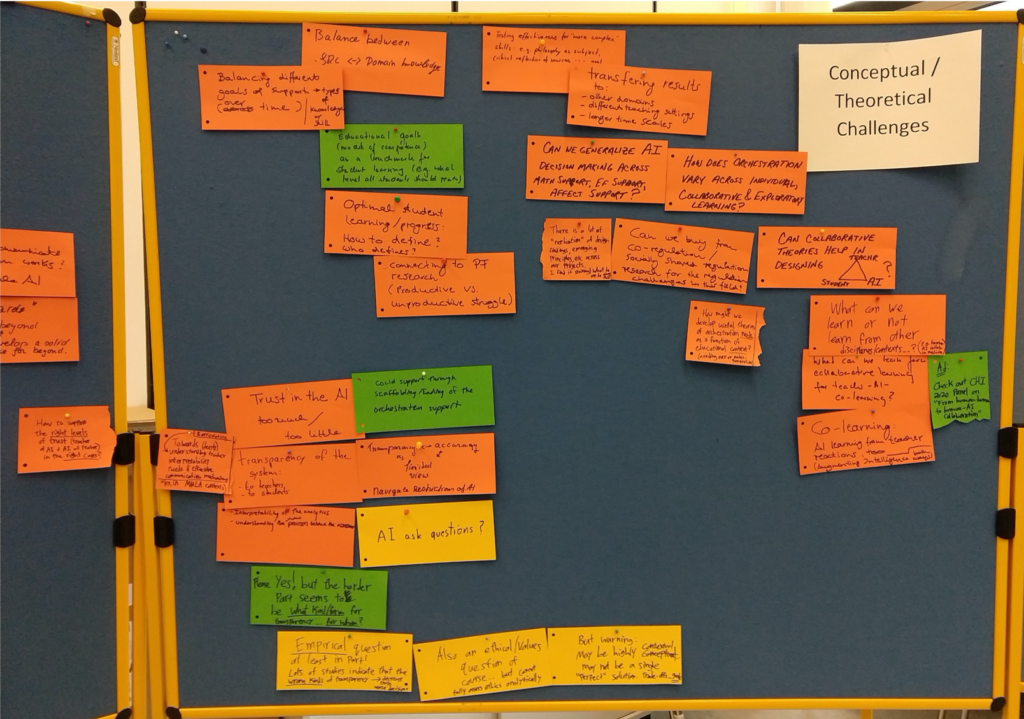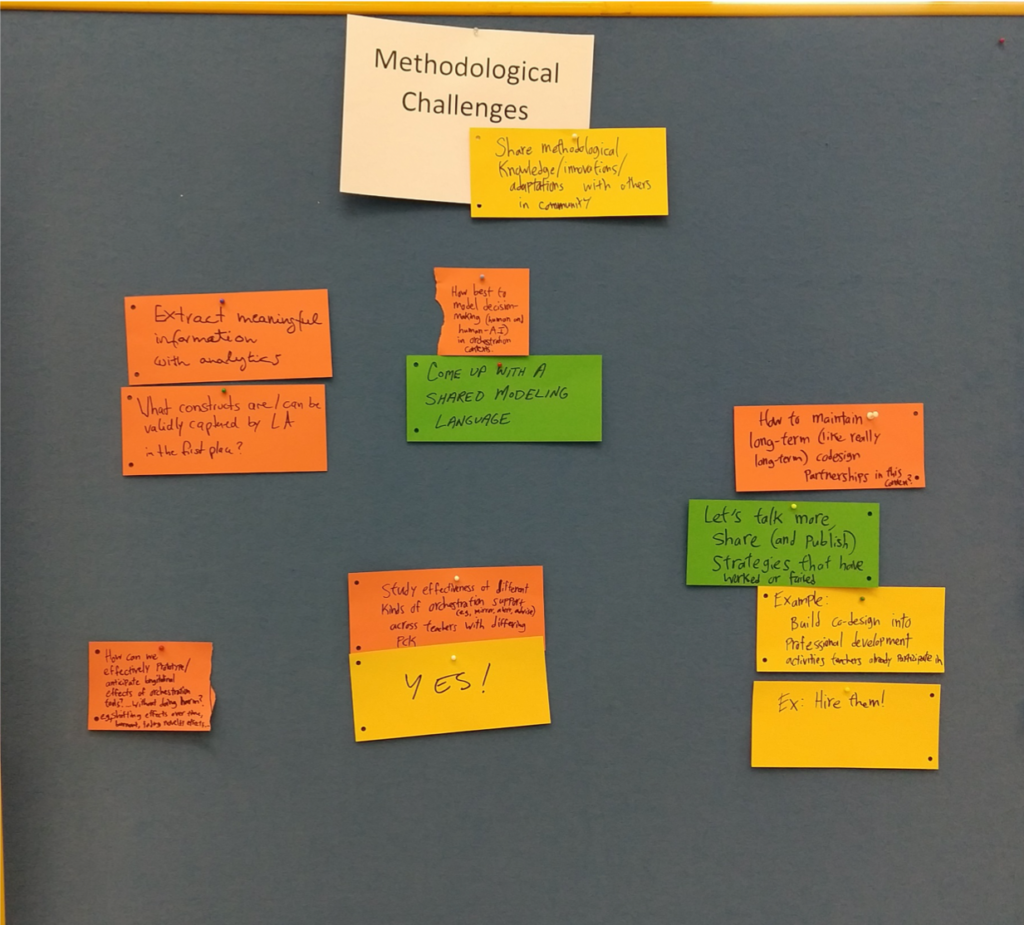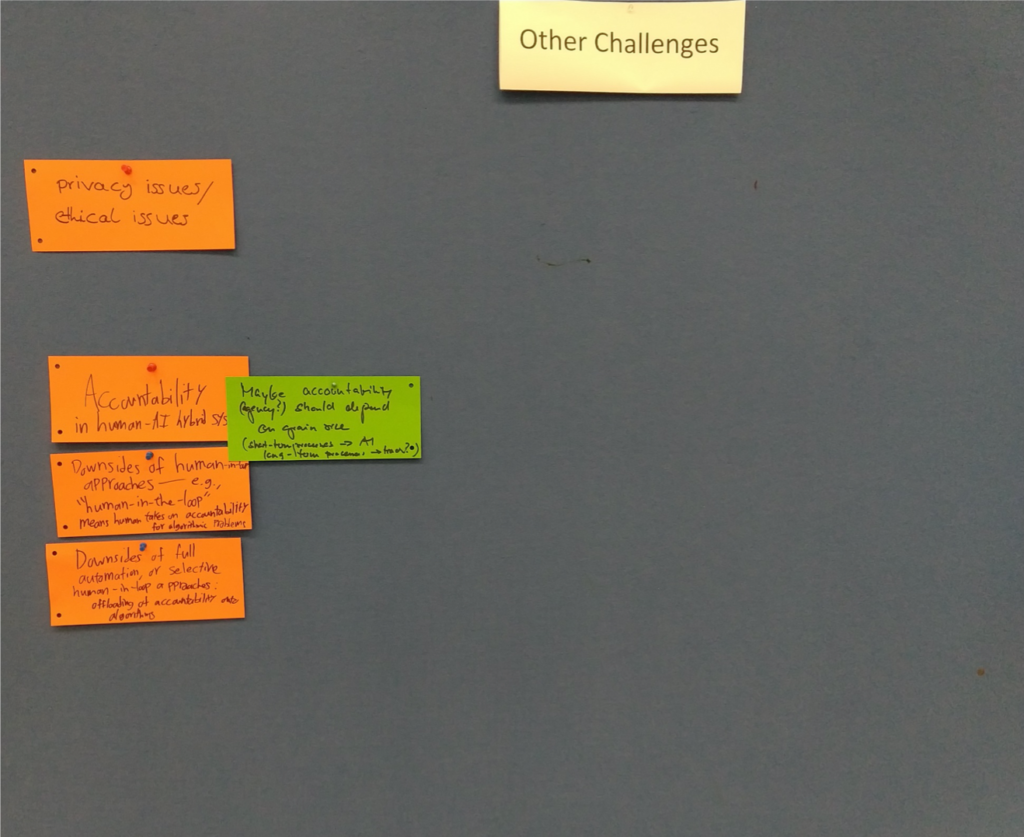On the 4th and 5th of March 2020 in Bochum the international workshop on Teacher-Student-AI co-orchestration in education took place. Participants in the workshop include Vincent Aleven, Ken Holstein and Bruce McLaren from Carnegie Mellon University, Manolis Mavrikis and Mutlu Cukurova from University College London, Anouschka van Leeuwen from Universiteit Utrecht, Jenny Olsen from École Polytechnique Féderale de Lausanne (EPFL), Inge Molenaar from Radboud Universiteit, Nikol Rimmel from Ruhr-Universität Bochum, Knut Neumann from the Leibniz Institut für die Pädagogik der Naturwissenschaften und der Mathematik, and Jan Schneider from the DIPF.
During the workshop, researchers presented their research with the purpose to identify common challenges and propose ideas and research directions to solve them. Most of the institutes are working on different learning scenarios and therefore trying to address different research goals. For example, the learning scenario from colleagues of the Carnegie Mellon University consists of using Intelligent Tutoring Systems for Mathematics in a classroom setting, and one of their current research goals is to identify how AI can be used to help the teacher to provide better interventions to students. Researchers from Utrecht Universiteit and EPFL presented their work on using AI to support the orchestration of classroom activities. Researchers explained that teachers waste valuable time that could be used for personalized feedback in the orchestration of classroom activities, and then proposed the use of AI systems to support this orchestration. Moving away from classroom settings Jan Schneider from the DIPF demonstrated how AI can be used to support the deliberate practice of complex psychomotor skills.
Regardless of the completely different scenarios some recurrent design, conceptual, and methodological challenges were identified and discussed. One common goal that arose from the discussions was that as researchers in the field of Educational Technologies it is important to identify how students, teachers, and AI systems should communicate with each other in order to create more comprehensive and improved learning experiences for students and teachers.






